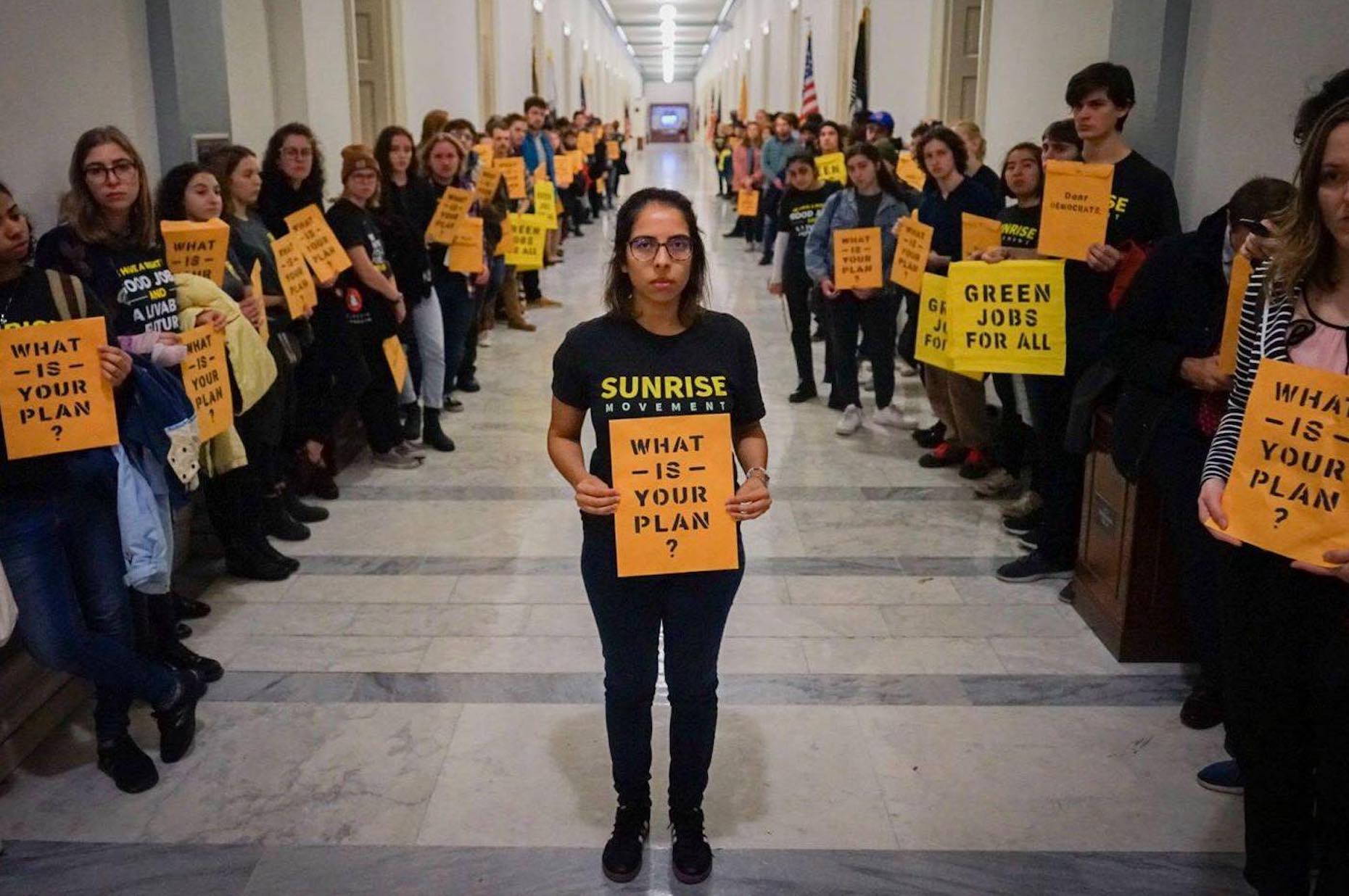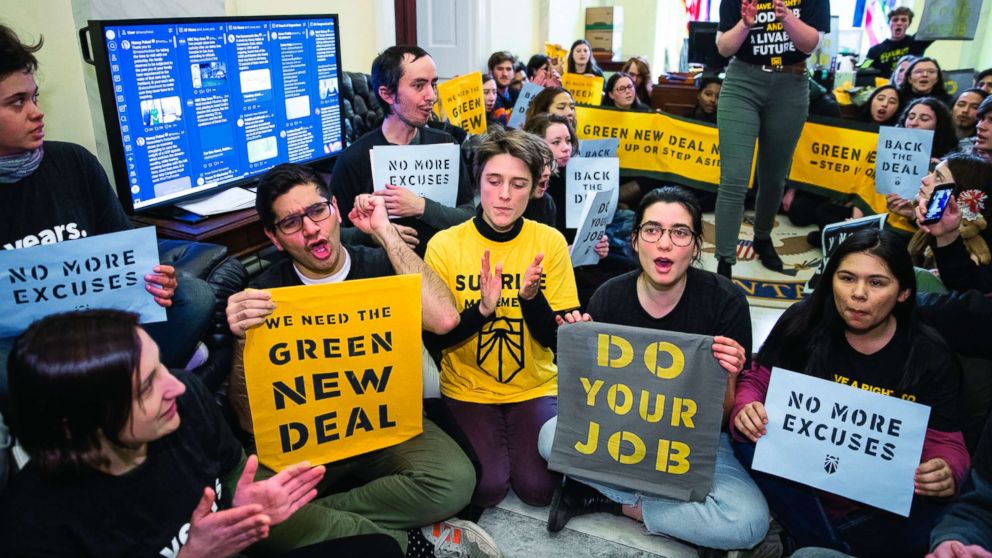
Going 100% Green Will Pay For Itself in Seven Years, Study Finds
(December 20, 2019) — A Stanford University professor whose research helped underpin the US Democrats’ Green New Deal says phasing out fossil fuels and running the entire world on clean energy would pay for itself in under seven years.
It would cost $73 trillion to revamp power grids, transportation, manufacturing and other systems to run on wind, solar and hydro power, including enough storage capacity to keep the lights on overnight, Mark Jacobson said in a study published Friday in the journal One Earth. But that would be offset by annual savings of almost $11 trillion, the report found.
“There’s really no downside to making this transition,” said Jacobson, who wrote the study with several other researchers. “Most people are afraid it will be too expensive. Hopefully this will allay some of those fears.”
Some of Jacobson’s past findings have been questioned, notably a 2017 journal article that criticized his methodology on measuring the cost of phasing out fossil fuels.
The biggest challenge of ditching fossil fuels may not be economic. Even some clean-power advocates acknowledge technology isn’t available yet to run power grids entirely on renewables without jeopardizing reliability.
The report published Friday looked at 143 countries that generate more than 99% of the world’s greenhouse emissions. The savings would come from not extracting fossil fuels, using higher-efficiency systems and other benefits of shifting entirely to electricity. It follows a paper Jacobson [See below — EAW] published in 2015 laying out a state-by-state plan for the US to convert to 100% renewables.

Impacts of Green New Deal Energy Plans on Grid Stability, Costs, Jobs, Health, and Climate in 143 Countries
Mark Z. Jacobson et al. / One Earth
Highlights
• Green New Deal all-sector energy roadmaps are developed for 143 countries
• WWS grid stability is analyzed, and cost metrics are developed for BAU versus WWS energy
• WWS energy reduces energy needs by 57.1%, energy costs by 61%, and social costs by 91%
• WWS energy costs $73 trillion upfront and creates 28.6 million more jobs than BAU energy
Science for Society
(December 20, 2019) —The Earth is approaching 1.5°C global warming, air pollution kills over 7 million people yearly, and limited fossil fuel resources portend social instability. Rapid solutions are needed. We provide Green New Deal roadmaps for all three problems for 143 countries, representing 99.7% of world’s CO2 emissions.
The roadmaps call for countries to move all energy to 100% clean, renewable wind-water-solar (WWS) energy, efficiency, and storage no later than 2050 with at least 80% by 2030.
We find that countries and regions avoid blackouts despite WWS variability. Worldwide, WWS reduces energy needs by 57.1%, energy costs from $17.7 to $6.8 trillion/year (61%), and social (private plus health plus climate) costs from $76.1 to $6.8 trillion/year (91%) at a capital cost of ∼$73 trillion. WWS creates 28.6 million more long-term, full-time jobs than are lost and needs only 0.17% and 0.48% of land for footprint and space, respectively. Thus, WWS needs less energy, costs less, and creates more jobs than current energy.
Summary
Global warming, air pollution, and energy insecurity are three of the greatest problems facing humanity. To address these problems, we develop Green New Deal energy roadmaps for 143 countries. The roadmaps call for a 100% transition of all-purpose business-as-usual (BAU) energy to wind-water-solar (WWS) energy, efficiency, and storage by 2050 with at least 80% by 2030.
Our studies on grid stability find that the countries, grouped into 24 regions, can match demand exactly from 2050 to 2052 with 100% WWS supply and storage. We also derive new cost metrics. Worldwide, WWS energy reduces end-use energy by 57.1%, aggregate private energy costs from $17.7 to $6.8 trillion/year (61%), and aggregate social (private plus health plus climate) costs from $76.1 to $6.8 trillion/year (91%) at a present value capital cost of ∼$73 trillion.
WWS energy creates 28.6 million more long-term, full-time jobs than BAU energy and needs only ∼0.17% and ∼0.48% of land for new footprint and spacing, respectively. Thus, WWS requires less energy, costs less, and creates more jobs than does BAU.
Graphical Abstract

Introduction
The world is beginning to transition to clean, renewable energy for all energy purposes. However, to avoid 1.5°C global warming, we must stop at least 80% of all energy and non-energy fossil fuels and biofuel emissions by 2030 and stop 100% no later than 2050.
Air pollution from these same sources kills 4–9 million people each year (Figure 1), and this damage will continue unless the sources of air pollution are eliminated. Finally, if the use of fossil fuels is not curtailed rapidly, rising demand for increasingly scarce fossil energy will lead to economic, social, and political instability, enhancing international conflict.

Figure 1: Estimated BAU Air-Pollution Mortalities in 2016 and 2050 by World Region
In an effort to solve these problems, studies among at least 11 independent research groups have found that transitioning to 100% renewable energy in one or all energy sectors, while keeping the electricity and/or heat grids stable at a reasonable cost, is possible.
The reviews of Brown et al. and Diesendorf and Elliston further find that critiques of 100% renewable systems are misplaced. The latter study, for example, concludes, “the main critiques published in scholarly articles and books contain factual errors, questionable assumptions, important omissions, internal inconsistencies, exaggerations of limitations and irrelevant arguments.”
Among the studies that find that 100% renewable energy is cost effective, many have been of limited use to policy makers because they considered only private cost and not social cost, did not compare business-as-usual (BAU) with wind-water-solar (WWS) energy, and considered only cost per unit energy and not the aggregate (summed) cost over all end-use energy used.
First, social (economic) costs are private market costs plus external costs not accounted for in market costs or prices. In the present context, the most relevant external costs are those due to (1) air-pollution mortality, morbidity, and non-health damage and (2) global warming damage. A social-cost analysis is more useful to policy makers than is an analysis that considers only private costs because the former gives policy makers a more complete picture of the impacts of policies that affect climate change and air pollution than does the latter.
Second, many studies have not compared the cost of WWS energy with that of BAU energy. As such, determining the magnitude of the benefit of one over the other is difficult. Differences between WWS and BAU energy are masked even more when a private-cost analysis, which ignores health and climate costs, is performed instead of a social-cost analysis.
Third, most analyses look at the cost per unit energy rather than the aggregate energy cost per year. This problem is significant because a WWS system uses much less end-use energy than does a BAU system.
In 2009, Jacobson and Delucchi calculated that transitioning the world’s all-purpose energy to 100% WWS energy by 2030 could be technically and economically feasible, but for social and political reasons, a complete transition by 2030 was unlikely and could take up to a couple of decades longer.
Subsequent roadmaps proposed an 80% transition by 2030 and a 100% transition by no later than 2050 (e.g., Figure S1). The energy portion of the Green New Deal (GND) proposed in the US Congress and earlier versions of it adopted Jacobson and Delucchi’s “technically and economically feasible” 2030 deadline and “100% clean, renewable, and zero-emission energy sources” goal.
This paper provides GND energy roadmaps for transitioning 143 countries, representing more than 99.7% of global fossil fuel CO2 emissions, to 100% WWS energy for all energy purposes (which include electricity, transportation, building heating and cooling, industry, agriculture, forestry, fishing, and the military; Note S28). The proposed transition timeline is no less than 80% WWS energy by 2030 and 100% by no later than 2050 (Figure S1) worldwide.
The paper also provides analyses of grid stability for 24 world regions encompassing the 143 countries (Table 1). Because the 100% clean, renewable, and zero-emission energy goals of the present study are the same as those of the US GND, but with an adjusted timeline, the present study can help to evaluate the costs and feasibility of the energy component of not only the US GND but also the GNDs of 142 other countries. The US GND contains additional proposed legislation related to jobs, health care, education, and social justice.
The present study does not fully evaluate the costs or merits of these other components. However, because the energy transitions outlined here benefit air-pollution health, climate, and jobs, this work partly addresses some of these components.
In this study, we evaluate results considering both private and social costs in terms of (1) the cost per unit end-use energy and (2) the cost aggregated over all end-use energy (“aggregate” cost). New cost metrics are provided. At the end, we discuss uncertainties and sensitivities as well as differences between the present study and two recent studies that argue that using 100% renewables for electricity is not feasible at low cost.
Read the complete report online at One Earth.